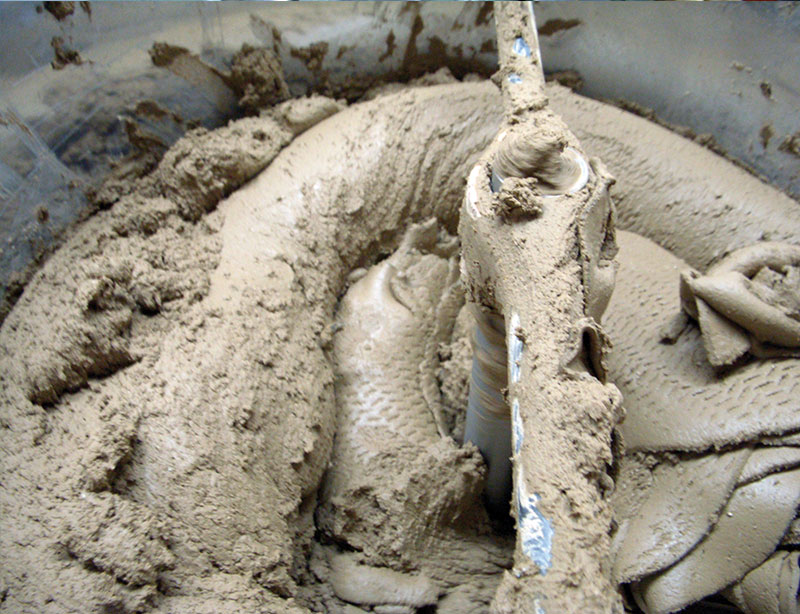
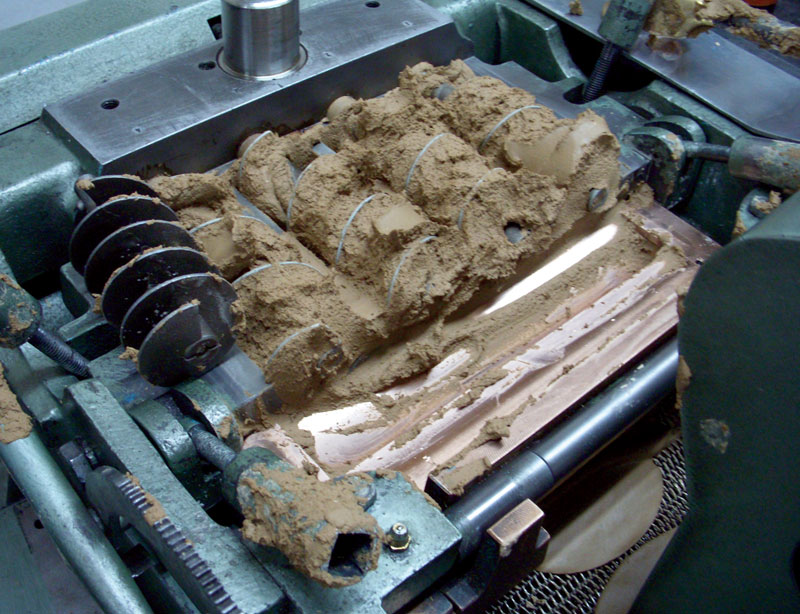
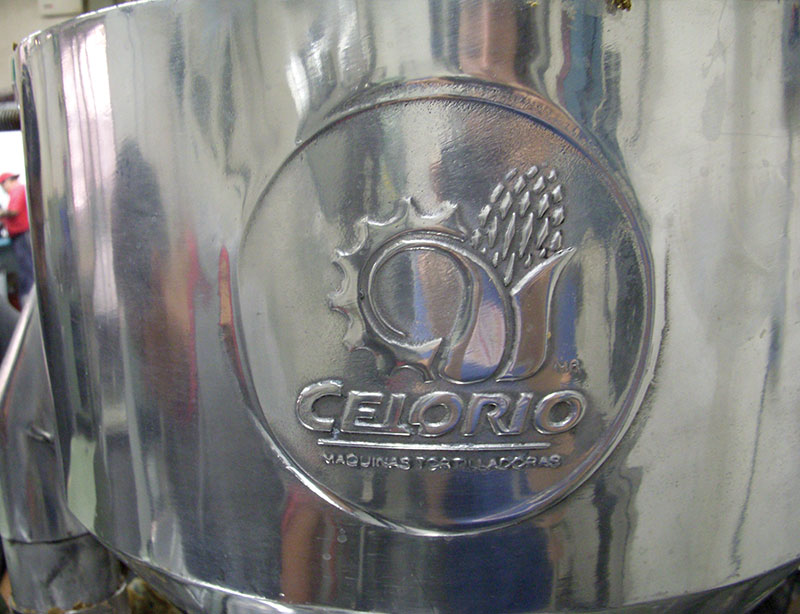
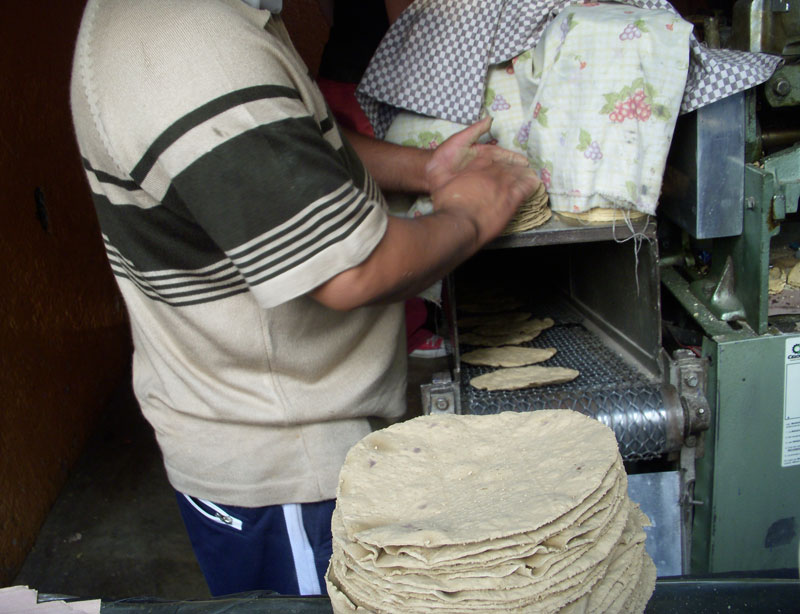

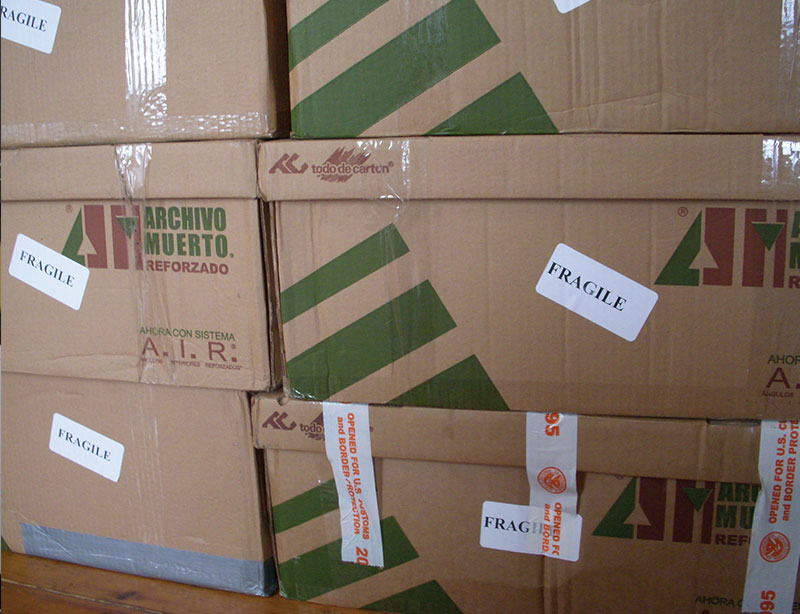
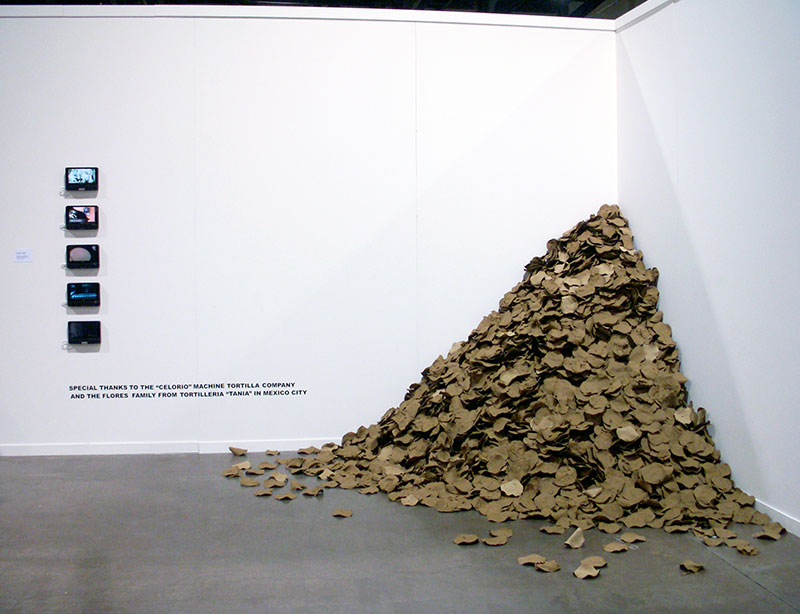
This project stemmed from three main ideas technological migration, cultural resistance and the reappropriation of the function in a machine.
On March 2009, I wanted to insert clay into a tortilla machine to create clay tortillas. Clay as structural element, it was a material that came from earth, one that behaved like corn dough and lastly, could also be baked.
Additionally, the tortilladora technology, coming from the ‘ground’ as a response for a Mexican demand as opposed to receiving a foreign technology adapted for our environment, became a grass-root solution for the efficiency of a hand-made process that was heroically undertaken by women under periods of 35 to 40 hours each week.
Thanks to Mercedes Castañeda I was able to get in touch with Arq. Guillermo Castañeda of Celorio Tortilla Machines who let me run some tests on the Inventions area in the factory. Camerino Osorio and Erasmo Leonidas were in charge of getting the right consistency for the machine to process the clay only after mixing clay and corn together.
Finally on May 2009 I generated a larger production of clay and corn tortillas for an installation of 6000 tortillas manufactured by Joel Flores and his family at Tortillería Tania and then shipped to Providence, RI.
The result of this disruption was a new formal element that blended clay which is usually related to a handcrafted process with a manufactured alimentary process transforming it into a resilient formal element. It was also an opportunity to understand how technological migration perpetuates identity. Finally, it was important to recognize how standardized machines aided Mexican women to break away from patriarchal minds and chores.